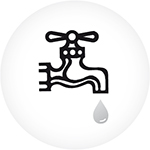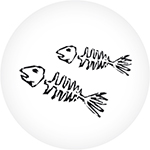
CHAPTER 2 ASANA Our Connection to the Earth and All Beings
We have come into this world to bring peace and happiness to all beings. To achieve this goal, it is necessary to adopt peaceful ways of harmless living and noninterference in the happiness of others.
—SWAMI NIRMALANANDA
We have been at war with the other creatures of this Earth ever since the first human hunter set forth with spear into the primeval forest. Human imperialism has everywhere enslaved, oppressed, murdered, and mutilated the animal peoples. All around us lie the slave camps we have built for our fellow creatures, factory farms and vivisection laboratories, Dachaus and Buchenwalds for the conquered species. We slaughter animals for our food, force them to perform silly tricks for our delection, gun them down and stick hooks in them in the name of sport. We have torn up the wild places where once they made their homes. Speciesism is more deeply entrenched within us than sexism, and that is deep enough.
—RON LEE, FOUNDER OF THE ANIMAL LIBERATION FRONT
sthira-sukham āsanam PYS II.46
The connection to the Earth should be steady and joyful.
- sthira: steady
- sukham: joyful
- asanam: seat (connection to the Earth)
WHEN MOST PEOPLE THINK OF yoga, they think of the physical postures called asana. In fact, Patanjali mentions asana only twice in the Yoga Sutras, but when he does he provides us with a powerful means to purify our relationships with others.
There is a misperception that asana is done in preparation for the “higher” yogic practices, such as meditation. This is not true. In the Yoga Sutras, Patanjali gives asana equal importance to meditation as a practice for reaching awareness of the oneness of all being. Sthira means “steady,” and sukham means “joyful and comfortable.” In our contemporary times, asana is usually translated as “pose” or “posture.” The original meaning of the Sanskrit word is “seat.” (The English word ass is cognate with asana.) Patanjali is addressing those who seek enlightenment. He tells them that, in order to achieve enlightenment, their connection (or relationship) to the Earth—which refers to all beings and things—must be both steady and joyful. Currently, our connection to the Earth is dangerously out of balance, and asana practice can provide much-needed insight into how to improve it.
Asana practice is beneficial on many levels. It has been shown to help restore flexibility and strength, to be therapeutic for injuries, and to balance hormonal secretions, supporting youthfulness. For one who desires enlightenment, asana practice is especially valuable because it provides an opportunity to purify one’s karmas. Because our bodies are storehouses for all of our past karmas, and our physical bodies are made from the food that we eat, imbalances show up as tightness, uptightness, discomfort, and even disease. Through the deeply therapeutic practice of asana, we begin to purify our karmas, thereby healing our past relationships with others and reestablishing a steady and joyful connection with the Earth, which means all of life.
With sthira-sukham asanam, Patanjali is proposing a radical idea that, if realized and put into practice, could stop the war that human beings have been waging against animals and Mother Nature for the past 10,000 years. With the conclusion of that war, we could begin to build a new world and a harmonious and sustainable way of living based on joy and mutual benefit.
Is there a contradiction between spirituality and veganism, environmentalism, or animal rights activism? The latter three are associated with politics, and many yogis have been cautioned not to mix spirituality with politics. But let’s look deeper into what the word politic really means. Politic means “body.” The word can also mean “the greater body,” implying the extended body or community. Being political means “to care about the politic”—the community of others we live with. The term dharma literally means “to hold together,” which is what a body does. In this sense, being politically active has a dharmic connotation. To choose to be aware of how one’s actions may affect others is to become politically active. To care about other beings and act on their behalf is therefore very much in line with the teachings of yoga.
If we, as a species, are ever going to find a way to live peacefully—which implies fearlessly—then we must look to our relationship with creation itself to see where the obstacles to peace arise. The practice of asana allows us to investigate our physiology and psychology. If we have been eating meat and dairy products, we have bodies that are not only filled with toxins hazardous to our health (in the form of pesticides, herbicides, and antibiotics and other pharmaceutical drugs) but also composed of the karmic results of violence, cruelty, fear, terror, and despair. Through asana practice, we begin to notice how our diet may be contributing to tightness and constriction in our bodies and minds and an uneasy feeling of imbalance with ourselves and others.
We may also notice, as we go deeper into our asana practice, that the prevalent disease in our culture is low self-esteem. Perhaps we feel bad about ourselves if we can’t execute a yoga asana perfectly. As we watch our thoughts spin into a downward spiral, we may begin to realize that our culture has done an excellent job of making us all feel fearful and quite inadequate. This lack of self-confidence may cause us to think that what we do as an individual doesn’t matter much to the whole and that our actions are insignificant. If we feel this way, we may not believe that we are responsible for our own lives and that we have a profound effect on the lives of others and the world around us. We may even feel unworthy of spiritual attainment and think that enlightenment is reserved only for people like Ramakrishna, Buddha, or Mother Teresa. The practice of yoga has the power to shatter and dissolve these misconceptions, but it might take a lot of transformational work to accomplish that.
Ours is not a meditative, self-reflecting culture. We are a distracted, gotta-get-up-and-do-something culture, always seeking stimulation from the outside. For a meat eater to be calm enough to come to a yoga mat or meditation cushion and surrender to deep contemplation can be quite difficult, perhaps because it will be hard to bear the truth of what might be found inside: the shadow that has been denied. From its inception, our culture has participated in the brutal reality of the enslavement and eating of animals. If we eat meat, we carry in our bodies the karmic repercussions of the pain we have inflicted on these animals we are consuming. Even if we are vegans and don’t eat animals, we still live in an atmosphere where this is happening, and on some level, we feel the suffering.
Through the benefits that arise from practicing yoga, and not just from reading or hearing about it, we may discover that cultivating kindness improves our sense of well-being, our peace of mind, and our physical health. On the other hand, violence and selfish habits lead ultimately to physical, mental, spiritual, and environmental breakdown.
“Most people’s relationship to animals occurs three times a day when they sit down to eat them—that’s a terrible way to define a relationship!” says activist Ingrid Newkirk. Contrary to popular belief, the animal nations do not belong to us, and we will ultimately not benefit by exploiting them for our shortsighted gain. The yogi strives to live in harmony with Mother Nature and, through her blessings, attain enlightenment—the knowledge of the absolute reality. This is the underlying reason that eating a vegan diet, which minimizes one’s exploitation of animals and the environment, is of vital importance. Eating a vegan diet can contribute more to saving ourselves and the planet than any other single effort.
Our meat-eating culture not only affects the animals that are tortured and killed but also causes tremendous worldwide environmental devastation—which scientists loudly proclaim will have catastrophic effects on the planet.
Some facts:

1. Global warming: According to the United Nations, raising animals for food creates more greenhouse gas emissions than all the transportation (cars, trucks, buses, trains, planes, ships, etc.) in the world.7 This is the real “inconvenient truth.” A person who follows a vegan diet produces the equivalent of 50 percent less carbon dioxide and uses one-eleventh the oil a meat-eater uses.8

2. Water pollution: In the United States, raising animals for food causes more water pollution than any other industry.9 These animals produce 130 times the waste of the entire human population of the United States, 87,000 pounds of waste per second.10 A farm with 2,500 dairy cows produces the same amount of waste as a city of 411,000 people.11 Much of the waste from factory farms—which contains high levels of toxic chemicals from pesticides, herbicides, and antibiotics, hormones, and other pharmaceuticals—flows into and contaminates streams, rivers, and oceans as well as our drinking water.12

3. Water use: More than half the water consumed in the United States is used to raise animals for food.13 It takes 2,500 gallons of water to produce 1 pound of beef,14 but only 25 gallons to produce 1 pound of wheat.15 It takes 477 gallons of water to produce 1 pound of eggs; almost 900 gallons of water are needed for 1 pound of cheese.16 It takes an entire months’ worth of showers to produce just 1 gallon of milk, and an estimated 4,200 gallons of water per day to produce the average meat-and-dairy diet. The production of an average plant-based diet, by comparison, requires 300 gallons of water per day.17

4. Oceans: The world’s oceans are being emptied of life; we could see fishless oceans by 2048.18 Each year, 90–100 million tons of fish are pulled from our oceans.19 As many as 2.7 trillion additional animals are pulled from the ocean each year.20 For every 1 pound of fish caught, up to 5 pounds of unintended marine species are caught and discarded as by-kill.21 As many as 40 percent of fish caught globally every year (63 billion pounds) are discarded simply because they were not the type of fish the fishermen were fishing for.22 Scientists estimate that as many as 650,000 whales, dolphins, and seals are killed every year by fishing vessels.23 Most of the fish and other sea creatures caught annually are not eaten directly by humans but are fed to livestock. It may take 12 pounds of grain to make 1 pound of beef, but it also takes 100 pounds of fish to produce that pound of beef. It takes 50 pounds of wild fish to feed one factory farm–raised salmon.24

5. Land: Of all the agricultural land in the United States, 80 percent is used to raise animals for food and the crops to feed them.25 That’s 45 percent of the total landmass in the United States. According to the United Nations, global land use for farms could be reduced by more than 75 percent—an area equivalent to the United States, China, the European Union, and Australia combined—and still feed the entire world if everyone went vegan.26 A 2019 climate change report from the United Nations says, “This sort of change won’t come from any industry or government body—it will happen only when we all stop eating animals.”
Land required to feed 1 person for 1 year:
- VEGAN: ⅙th acre
- VEGETARIAN: 3 times as much as a vegan
- MEAT EATER: 18 times as much as a vegan27

6. Deforestation: Our wild forests, which are habitats for wild animals, are disappearing. It is estimated that up to 137 plant, animal, and insect species are lost every day due to animal agriculture and its resultant deforestation.28 One-third of the planet is desertified, with livestock as the leading driver.29 Animal agriculture is responsible for up to 91 percent of Amazon rain forest destruction.30 An acre of land disappears every eight seconds worldwide, cleared to grow crops to feed confined animals in factory farms.31 These crops are heavily contaminated with herbicides and pesticides, and in many cases these plants have been genetically engineered and contain GMOs that infiltrate our ecosystem.

7. Crops: The human world population in 1812 was 1 billion; 1.5 billion in 1912, and 7 billion in 2012; that number is projected to increase to 8 billion by 2021 and 9 billion by 2040.32 We are growing enough plant-based food to feed 10 billion people,33 but most of those people are not getting that food because it is being fed to livestock.34 In the United States, 95 percent of the corn grown is fed to animals raised for food. Most of the soybeans grown in the world are not used to make tofu or soymilk for people, but are fed to livestock. Most of this feed has been genetically manipulated and is heavily laden with herbicides and pesticides.35

8. Fossil fuel depletion: It takes eleven times as much fossil fuel to produce a calorie of animal protein as it does to produce a calorie of grain protein.36 Over one-third of all fossil fuels used in the United States goes to raise animals for food.37 The war in the Middle East, the war for oil, is being fought to fuel the meat and dairy industries in the United States. Agriculture accounts for more than twice as much of the U.S. energy budget as the military.38
Each day, a person who eats a vegan diet saves 1,100 gallons of water, 45 pounds of grain, 30 square feet of forested land, and at least one animal’s life.39
A vegan diet is probably the single biggest way to reduce your impact on Planet Earth, not just greenhouse gases, but global acidification, eutrophication, land use, and water use. It is far bigger than cutting down on your flights or buying an electric car. 40
—JOSEPH POORE, RESEARCHER, OXFORD UNIVERSITY
We are depriving ourselves and future generations of fresh water, clean air, and a toxin-free world. Our human technology is an extension of our unenlightened minds, which do not grasp the interconnectedness of life. As a result, we are rapidly contaminating all living things, present and future, by raising animals for food.
When left alone, undomesticated animals may not possess the technological skills and tools we have, but they may have something more vital that we do not: an innate intelligence and awareness of how to successfully coexist on Earth in the long term. Our environment is not becoming contaminated and barren because of wild animals. It is not because of them that we cannot drink from our rivers, lakes, and streams. Animals are naturally able to live with this planet and one another in ways that are sustainable and do not poison the air, soil, and water or destroy the habitats of other beings.
We, on the other hand, are destroying everyone else and ourselves with our destructive lack of awareness. Currently, the atrocities committed against animals in the name of human progress are the most important issues facing us all. With careful investigation, we will discover that most other issues plaguing us—from health crises to environmental woes to wars fought over land and oil—stem from it. Perhaps if we were to reverse our ways of relating to animals as mere things and instead began listening to them and observing how they live in harmony with the planet, we could learn some valuable lessons.
Yoga serves to awaken and remind us that we do know how to live in harmony with life. When we rediscover our own wildness, the shackles of our present culture will fall away, and we will find ourselves liberated from pretense and uncertainty. Yoga reveals to us the constraints and toxicity of our present culture. Yoga can show us the path to a renewed way of life and, ultimately, a way for us to stay alive.
In a larger context, asana refers to our relationship to the Earth, which includes the environment as well as all beings. But as is true of all “life” philosophies, both esoteric and exoteric components must be considered in order for us to develop deeper understanding of what it means to be alive. Yoga philosophy teaches that the reality we perceive as outside us is actually a reflection of what is inside us. This being so, the physical practice of asana allows us to deeply investigate, on a causal level, our relationship with the Earth and all other beings. It is through the investigation of our own body and mind that we discover within ourselves tendencies that we now see outside ourselves and want to change. Asana practice is indeed a very physical practice that respects the knowledge stored in the body and views the body not merely as something that carries the head around.
We cannot really “do” yoga, because Yoga is our natural state of being. Yoga refers to that enlightened state of living in harmony with all of existence. What we can do are certain practices that may reveal to us where we are resisting that natural state. Once these resistances are revealed or brought to the light of our conscious awareness, we have a better chance of letting them go. Asana practice like meditation is in essence a means of letting go of that which we are not to reveal who we truly are. This is why you can’t “do” it. You can only let go and allow it. When resistances arise, we recognize and perceive them for what they truly are—or, we might say, where they are coming from.
Our bodies don’t lie: They tell the story of our past. Our bodies are made up of the residue of all our past unresolved karmas. For something to be a yoga practice, it must help us purify these karmas. The practice of asana is a yoga practice because it allows us to resolve past relationships with others and clarify our perception of ourselves.
Therapeutically, asana has the power to heal emotional traumas and put the personality back into order so that we may function as happier, better-adjusted individuals. Essentially, however, the practice is designed to bring the individual beyond the healing of the body and mind and into a greater realization of the Self as whole, existing as a part of cosmic, eternal reality.
While we are engaged in certain asanas, particular physical and mental feelings arise. These feelings provide valuable insight into the nature of our personality—self. Ultimately, through the practice of asana, one can resolve the small self into the experience of the transcendent Self. This is possible because each time we engage in a particular asana, whether a standing asana like trikonasana, a forward bend like paschimottanasana, a twisting asana like ardha matsyendrasana, a backbend like dhanurasana, or an inversion like sarvangasana, we energetically relive past karmic experiences that have been stored in the cells and tissues of our physical body. (Refer to chapter 13, “Yoga on the Mat.”)
Asana practice stimulates healing on many levels. Yes, it can help heal injuries and bring strength and flexibility to muscles and joints, but, spiritually, the practice of asana can release us from avidya, ignorance of who we really are. The practice of asana releases pranic (life-giving) energy, allowing it to flow through previously blocked subtle channels. When these channels flow with energy, we start to heal the disease of disconnection and begin to experience ourselves as much more than our physical body or personality self. We begin to experience ourselves as cosmic. What does that mean? It means we start to experience ourselves as part of a great whole, an interconnected eternal reality that transcends time and space. Wow! That’s trippy!
Since yoga is a very practical science, before tripping out into the psychedelic mind-blowing reality of cosmic oneness, let us first look into the reality of relative experience: the day-to-day here and now. After all, there is truth to the ancient alchemical precept “As above, so below.” To be free and make it to heaven, we must make heaven here on Earth. There is actually no other place to go but here. Everything we need to expand our consciousness is all right here and now. Asana is the key that can open up the doorway to the adventure waiting for us inside our own bodies, where our past, present, and future reside. By freeing our bodies of negative karmas (negative thoughts, words, and deeds), we awaken to the body as a potential vehicle for the Divine.
“The Divine” refers to that which is whole—that which is holy. When we are whole, we are able to become an instrument for peace, not destruction, because our actions arise out of the personal experience of the interconnectedness of all beings and things. Through our practice of asana, we build a holy (whole) body. As we free our bodies from fear, jealousy, and anger, we lift these negative emotions from the planetary atmosphere—which is, after all, only a reflection of what’s going on inside us.
The actual physical substance of our bodies is derived from the food we eat. What or even whom we eat is decided by how we perceive and relate to others. When Patanjali tells us that if we want enlightenment, we should relate to others in a mutually beneficial way, he implies that we should not view others as objects for us to use—if, that is, we truly want enlightenment. When reflected on in this way, the sutra sthira-sukham asanam (PYS II.46) provides valuable insight into how to improve our relationships with the other animals with whom we share this planet. The asana practice we do on and off the mat provides us with profound opportunities to heal the planet and evolve our human consciousness.
If we are to survive as a species, we must make the transition from a culture based on slavery, exploitation, violence, and death to a way of life based on kindness, peace, harmony, and wholeness. The practice of yoga holds within it the means to dismantle our present culture and give us the know-how to build a new way of life. What could be a better place to start than with the question “What shall we eat today?”
Eating is the most fundamental basis for our life, as it creates and maintains our physical body, without which we would have no life. The choice to eat a vegan diet will do more to revolutionize our bodies, minds, and spirit and bring about world peace than any other single act, because it powerfully effects change in the outside world through enacting that change from deep within our own bodies. Such change will put into motion a profound planetary revolution, because it makes other-centeredness, not self-centeredness, the number-one priority. Up until this point in history, we have been members of a culture that gives priority to self-centeredness. For thousands of years, the enslaving and exploitation of animals has escalated and continued unquestioned, but now we are questioning. We are at the brink of a new level of consciousness that considers the well-being of the whole, not just a privileged few.
Asana refers to our connection to the Earth and other beings. When we allow ourselves to delve deeper into the meaning of asana, we realize the power this ancient practice has to heal the global crisis we are facing. Asana provides us a way to heal ourselves from the disease of disconnection through healing our relationships with others. When we feel physically, emotionally, mentally, and spiritually connected to nature and all other beings, the greater global healing can begin.
The Hopi Elders tell us that we have passed the eleventh hour (a time of reckoning) and that now is the hour. Therefore, we should deeply consider all our relationships, including what or whom we are eating and where and with whom we are living. The Hopi wisely tell us, “At this time in history, we are to take nothing personally, least of all ourselves, for the moment we do, our spiritual growth and journey come to a halt.”
What could it mean to take oneself personally in such a way that causes one’s spiritual growth to stop? Our culture is essentially a domineering, herding culture. It is based on the enslavement of others, primarily other animal nations. It encourages us to seek self-gratification at the expense of others, even at the expense of the greater Earth community, mistakenly assuming that we can exist outside that community. The separation of spirit and body and of humanity and nature are results of the notion that the Earth belongs only to human beings. This ignorance (avidya) and egotism (asmita) lead to low self-esteem, and leave us feeling that what we do as individuals has little bearing on the whole. This feeling of insignificance represents the “personal” delusion that the Hopi Elders describe as the ultimate hindrance to our spiritual advancement.
Through communal yoga practice, as we experience the wonder of breathing together in a variety of ways, Self-confidence arises. Through chanting mantras and prayers, adding our voices to the choir, a greater sense of well-being develops. When we practice asana together, rhythmically moving in tune with breath and intention, we overcome debilitating estrangement, as we feel a part of a greater community. This unifying experience comes from a deep-rooted space of expansive yet inclusive consciousness, where all of existence is connected and pulsating with the joy of this wholeness, or holiness. The realization of unity is joyful and cannot be attained through hard struggle (working against something), but only through holy celebration.
Holy celebration is inclusive, as it embraces the whole community. Not one of us is an isolated case. Every action has tremendous impact on all of creation. We must take responsibility for our behavior by looking into the possible outcome of our every exhaled breath, word spoken, and action taken, asking ourselves, “Is this contributing to the happiness and well-being of the greater community?” This, truly, is the key to unlocking our potential, making a boundless future on this Earth possible. If it is not, then have the courage to recognize that it is not a holy celebration, because it does not include the whole. Stop holding your breath and get yourself in tune. Breathe with one another, dismantling our present master/slave culture, and find a new way of living, based in the universal, unifying musical language of rhythm, harmony, and partnership.
The Hopi Elders inspire us to pulsate with the global community when they encourage us by saying, “The time of the lone wolf is over—gather yourselves! Banish the word struggle from your attitude and your vocabulary. All that you do now must be done in a sacred manner and in celebration. We are the ones we have been waiting for!”

7 FAO, Livestock’s Long Shadow; PETA, “Fight Climate Change by Going Vegan,” PETA, http://www.peta.org/issues/animals-used-for-food/global-warming.
8 Janet Ranganathan and Richard Waite, “Sustainable Diets: What You Need to Know in 12 Charts.” World Resources Institute (April 2016), https://www.wri.org/blog/2016/04/sustainable-diets-what-you-need-know-12-charts.
9 Frances Moore Lappé, Diet for a Small Planet (New York: Ballantine, 1971), 22. See also Richard Oppenlander, “Freshwater Abuse and Loss: Where Is It All Going?,” Forks Over Knives, May 20, 2013, https://www.forksoverknives.com/freshwater-abuse-and-loss-where-is-it-all-going/#gs.8e3f1g.
10 Ed Ayres, “Will We Still Eat Meat?,” Time November 8, 1999, http://content.time.com/time/magazine/article/0,9171,992523,00.html. See also the U.S. Senate Committee on Agriculture’s 1997 report “Animal Waste Pollution in America: An Emerging National Problem” and U.S. General Accounting Office (GAO), “Animal Agriculture: Waste Management Practices,” GAO (1999), https://www.gao.gov/archive/1999/rc99205.pdf.
11 U.S. Environmental Protection Agency (EPA), “Risk Assessment Evaluation for Concentrated Animal Feeding Operations,” EPA, 2004 See also FAO, http://www.fao.org/home/en.
12 FAO, “More People, More Food, Worse Water? A Global Review of Water Pollution from Agriculture,” FAO and the International Water Management Institute, 2018, http://www.fao.org/3/ca0146en/CA0146EN.pdf.
13 Frances Moore Lappé, Diet for a Small Planet, 10th ed. (New York: Ballantine, 1982), 69. See also https://www.cowspiracy.com/facts.
14 Matt Moore, “Institute Warns of Possible Water Shortage,” Associated Press, April 20, 2004. See also Water Footprint Network, “Water Footprint of Crop and Animal Products: A Comparison,” Water Footprint Network, https://waterfootprint.org/en/water-footprint/product-water-footprint/water-footprint-crop-and-animal-products.
15 Robbins, The Food Revolution, 236.
16 Water Education Foundation, “Food Facts: How Much Water Does it Take to Produce…?,” Water Education Foundation, https://www.watereducation.org/post/food-facts-how-much-water-does-it-take-produce.
17 Aisling Maria Cronin, “You Can Save Over 200,000 Gallons of Water a Year with One Simple Choice,” One Green Planet, https://www.onegreenplanet.org/environment/how-to-save-water-with-one-simple-choice.
18 John Roach, “Seafood May Be Gone by 2048, Study Says,” National Geographic, November 2, 2006, https://www.nationalgeographic.com/animals/2006/11/seafood-biodiversity.
19 FAO, “World Review of Fisheries and Aquaculture: Part 1,” FAO, http://www.fao.org/3/i2727e/i2727e01.pdf.
20 A. Mood and P. Brooke, “Estimating the Number of Fish Caught in Global Fishing Each Year,” Fishcount.org.uk, http://www.fishcount.org.uk/published/std/fishcountstudy.pdf.
21 FAO, “Discard and Bycatch in Shrimp Trawl Fisheries,” FAO, http://www.fao.org/3/W6602E/w6602E09.htm.
22 Amanda Keledjian et al., “Wasted Catch: Unsolved Problems in U.S. Fisheries,” Oceana (March 2014), http://oceana.org/sites/default/files/reports/Bycatch_Report_FINAL.pdf.
23 Suzanne Goldenberg, “America’s Nine Most Wasteful Fisheries Named,” Guardian, March 20, 2014, https://www.theguardian.com/environment/2014/mar/20/americas-nine-most-wasteful-fisheries-named.
24 Paul Watson, “Consider the Fishes,” VegNews (March–April 2003): 27.
25 Kenneth S. Krupa and Marlowe Vesterby. “Major Uses of Land in the United States,” Statistical Bulletin No. 973, U.S. Department of Agriculture (USDA), 1997. See also “Irrigation and Water Use,” USDA, https://www.ers.usda.gov/topics/farm-practices-management/irrigation-water-use/background.aspx.
26 Intergovernmental Panel on Climate Change (IPCC), “Report on the Ocean and Cryosphere in a Changing Climate,” IPCC, 2019, https://www.ipcc.ch/srocc/home.
27 John Robbins, Diet for a New America: How Your Food Choices Affect Your Health, Your Happiness, and the Future of Life on Earth (Walpole, NH: Stillpoint Publishing, 1987), 352.
28 John Vidal, “Protect Nature for World Economic Security, Warns UN Diodiversity Chief,” Guardian, August 15, 2010, https://www.theguardian.com/environment/2010/aug/16/nature-economic-security.
29 Richard A. Oppenlander, Food Choice and Sustainability: Why Buying Local, Eating Less Meat, and Taking Baby Steps Won’t Work (Minneapolis: Langdon Street, 2013).
30 Hiroko Tabuchi, Claire Rigny, and Jeremy White, “Amazon Deforestation, Once Tamed, Comes Roaring Back,” New York Times, February 24, 2017, https://www.nytimes.com/2017/02/24/business/energy-environment/deforestation-brazil-bolivia-south-america.html?.
31 Will Tuttle, The World Peace Diet: Eating for Spiritual Health and Social Harmony (New York: Lantern, 2005), 185.
32 Public Broadcasting System (PBS), “Human Numbers Through Time,” PBS, https://www.pbs.org/wgbh/nova/worldbalance/numb-nf.html.
33 Eric Holt-Giménez, “We Already Grow Enough Food for 10 Billion People… and Still Can’t End Hunger,” Common Dreams, May 8, 2012, https://www.commondreams.org/views/2012/05/08/we-already-grow-enough-food-10-billion-people-and-still-cant-end-hunger.
34 FAO, Executive Summary, “Protein Sources for the Animal Feed Industry,” FAO, 2003, http://www.fao.org/3/y5019e/y5019e00.htm.
35 United States Department of Agriculture Economic Research Service, https://www.ers.usda.gov.
36 International Panel on Climate Change (IPCC), United Nations, “AR5 Climate Change 2014: Impacts, Adaptation, and Vulnerability,” IPCC, https://www.ipcc.ch/report/ar5/wg2.
37 One Green Planet, “Facts on Animal Farming and the Environment,” https://www.onegreenplanet.org/animalsandnature/facts-on-animal-farming-and-the-environment/.
38 Institute for Policy Studies, “Combat vs Climate: The Military and Climate Security Budgets Compared,” https://ips-dc.org/wp-content/uploads/2016/09/CvsC-Report-1.pdf.
39 Lillie Ogden, “The Environmental Impact of a Meat-Based Diet,” Vegetarian Times, April 4, 2007, https://www.vegetariantimes.com/life-garden/the-environmental-impact-of-a-meat-based-diet.
40 Damian Carrington, “Avoiding Meat and Dairy Is ‘Single Biggest Way’ to Reduce Your Impact on Earth,” Guardian, May 31, 2018, http://www.theguardian.com/environment/2018/may/31/avoiding-meat-and-dairy-is-single-biggest-way-to-reduce-your-impact-on-earth.